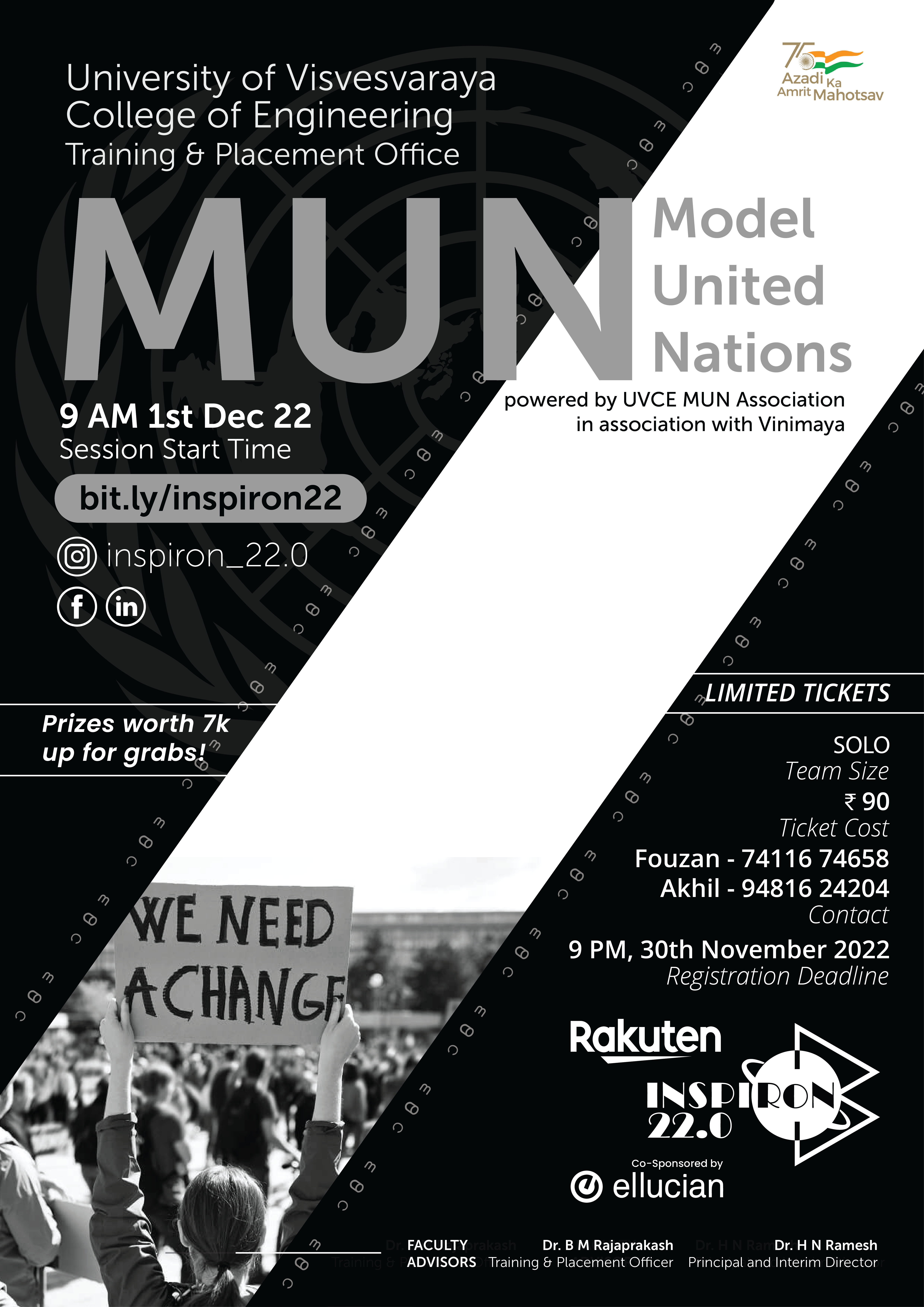Event Name
Model United Nations or simply MUN is a simulation of, you guessed it, the United Nations. Representatives of countries come together and discuss matters that affect the world. MUNs the perfect platform to polish or develop debating and research skills in an enjoyable manner, with the added flavoring of healthy and exhilarating competition. In a typical MUN - every participant will be allocated a country to represent. These delegates then come together to discuss the topic of discussion, formally known as the ‘agenda’.
Basic MUN Must-Knows
a) Motion: A specific action made by delegates to direct debate in a
certain direction. Speaker’s List: a list that contains the order of
speakers in the committee. The specific way that the order is
determined varies by conference. The Speaker’s List is the default
format of debate and the committee will proceed with speeches until
a delegate makes a motion to change up the debate format. Yield:
This is when a speaker decides to give up the remaining time in
their speech. Typically, the three types of yields are:
A) Yield to the Chair meaning you give up the rest of your time.
B) Yield to another delegate meaning you give up the rest of your
time to another delegate.
C) Yield to questions from other delegates or Yield to comments to
your speech by other delegates. Questions are also sometimes called
Points of Information.
b) POINTS:
1. Point of Parliamentary Inquiry: Used when a delegate has a
question about something that is not clearly understood in
committee. Use this to ask a question if you don’t understand a term
or get what’s going on in committee!
2. Point of Personal
Privilege: Used when a delegate experiences personal discomfort that
hinders their ability to participate in committee. Examples:
temperature of room, distractions during committee, can’t hear
another delegate, etc.
3. Point of Order: Used when a delegate
believes that there was a mistake made regarding the rules of
procedure
c) Moderated Caucus: A debate format that allows delegates to make
short comments on a specific sub-issue. Typically, delegates who are
interested in speaking will raise up their placards and the Chairs
will call on delegates to speak one at a time. In order to move into
a moderated caucus, the motion must include the overall speaking
time, the time per speaker, and the sub-issue to be discussed.
Example: Italy moves for a 5 minute moderated caucus with 30 second
speaking time per delegate for the purpose of discussing solutions
to women’s rights.
d) Unmoderated Caucus: A debate format in which delegates can leave
their seats to go and talk to others freely and informally. This is
usually when delegates find allies and work on draft resolutions. In
order to move into an unmoderated caucus, the motion must include
the overall caucus time and preferably the purpose of the
unmoderated caucus. Example: Senegal moves for an unmoderated caucus
for 10 minutes to complete draft resolutions.
e) Blocs: Different groups that have similar ideas and opinions about the topics. In the real United Nations, there are regional blocs, but delegates can choose to build their own blocs in Model UN. These blocs will typically work together to create a draft resolution.
For more details:
Fouzan - +91 74116 74658
Akhil - +91 73377 83935